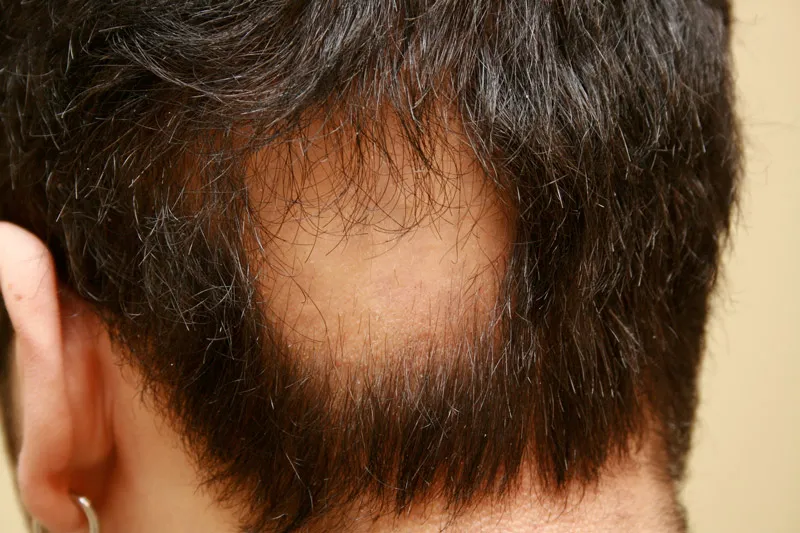Alopecia
- Home
- Alopecia

What is Alopecia?
Alopecia areata is an autoimmune disease that damages Hair Follicles, leading to hair loss. This hair loss typically appears in round, bald patches on the scalp. While alopecia can be emotionally challenging, it has no other physical side effects and is not contagious.
Alopecia Areata is a condition that causes round patches of hair loss. It can lead to total hair loss.
Alopecia areata, an autoimmune disorder, can cause hair loss on the scalp. In severe cases, alopecia areata can progress to alopecia totalis, resulting in the complete loss of hair on the head, or alopecia universalis, leading to the complete loss of hair from both the head and body.
What Are The Causes of Alopecia?
The exact cause of alopecia areata remains unknown, but it’s an autoimmune disorder. This means the immune system mistakenly targets Hair Follicles as if they were harmful invaders like bacteria or viruses. Scientists are still figuring out why this happens, but the immune system essentially attacks the Hair Follicles, leading to hair loss.
Who is at Risk of Alopecia?
What Are The Symptoms of Alopecia?
The initial sign of Hair Follicle condition is usually hair loss. Typically, hair will shed in circular patches, resulting in smooth, bald spots on the scalp. Additionally, other symptoms may include:
- Hair thinning in circular areas on the scalp without complete loss
- Hair breaking off in circular patches, leaving short stubble, sometimes called exclamation point hair
- In rare cases, complete hair loss including body hair
There is no consistent pattern or timeline for the symptoms of Hair Follicle condition. A patient might experience hair loss in one area that later regrows, followed by hair loss in a different area. Alternatively, some patients might not have recurrent hair loss at all.
For some individuals, hair loss can become permanent. Research indicates a higher likelihood of permanent hair loss if the following factors are present:
- Onset of Hair Follicle condition at a very young age, before puberty
- A prolonged episode of Hair Follicle condition lasting a year or more
- A family history of Hair Follicle condition
- Presence of autoimmune diseases or conditions
- Frequent allergies
- Abnormal finger and toenails, such as unusual shape or color
